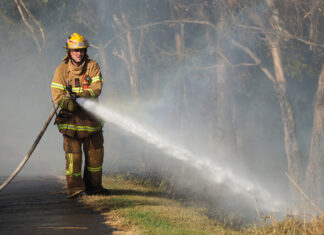Despite enduring their busiest six-month period on record, Geelong paramedics have managed to start reducing ambulance response times for the first time since the July-September quarter of 2020.
Demand for ambulance services in the Greater Geelong local government area (LGA) has soared since the beginning of the pandemic, increasing nearly 40 per cent since the first half of 2020.
Since that time, ambulance waiting times have steadily increased from 12 minutes to a peak of 14 minutes 25 seconds through April to June this year, while the amount of cases that were attended to in less than 15 minutes fell from 79.6 per cent to 69.9 per cent.
However, this last quarter has seen waiting times drop by 13 seconds to 14 minutes 12 seconds, with over 70 per cent of cases responded to in under the 15-minute threshold.
Ambulance Victoria Barwon South West regional director Terry Marshall said that demand remained at record levels for the first quarter of 2022-23 due to the continued impacts of COVID-19 and the flu.
“July to September was our busiest first quarter on record, and the second busiest quarter ever,” Mr Marshall said.
“Together with the previous quarter, this was by far the busiest and most challenging winter ever. Our paramedics and first responders worked tirelessly to keep delivering world class care.
“This quarter also marked one year since the Medium Acuity Transport Service crews, dedicated to non-urgent calls, hit the road, freeing up more ambulances for the most critical emergencies.”
Mr Marshall praised the efforts of paramedics and said Ambulance Victoria had implemented a range of strategies to be able to begin reducing waiting times.
“We’re working hard to relieve pressure across the health system with more paramedics on the road, more resources at 14 hospitals statewide to help offload patients faster and our MATS crews providing high quality care to less-urgent cases,” he said.
“In their first year of operation, MATS crews attended a total of 28,144 cases statewide. This includes 2,115 cases in the Greater Geelong LGA.
“That is a lot of time saved for other paramedic crews to respond to the most critically ill patients, so it’s good to see these dedicated crews making a real difference.”







